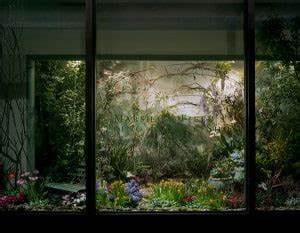
Introduction
Vertical gardens have gained immense importance in today’s urbanized world due to limited space and the need for sustainable living. This article explores the historical background, benefits, design considerations, case studies, current trends, challenges, and future outlook of vertical gardens.
Historical Background
Vertical gardens have a long history, with their origins traced back to the Hanging Gardens of Babylon, one of the Seven Wonders of the Ancient World. However, it was in the 20th century that vertical gardens gained significant attention. The rise of urbanization and the scarcity of horizontal space propelled the resurgence of vertical gardening.
Key Concepts and Definitions
Vertical gardens encompass different types such as green walls, living walls, and vertical hydroponics. Green walls involve attaching plants to a vertical structure, while living walls use soil or other growing mediums. Vertical hydroponics utilize a nutrient-rich solution for plant growth without soil. Techniques like trellises, planters, and modular systems are employed to support and maintain vertical gardens.

Main Discussion Points
Benefits of Vertical Gardens
Vertical gardens offer the advantage of maximizing limited space. In densely populated areas, vertical gardens allow for the cultivation of plants in otherwise unused areas. Additionally, they improve air quality by absorbing pollutants and releasing oxygen. Vertical gardens also enhance the aesthetics of surroundings and promote biodiversity by providing a habitat for various species.
Design Considerations for Vertical Gardens
Selecting suitable plants and species is crucial for the success of vertical gardens. Factors like light and irrigation requirements must be considered to ensure optimum plant growth. Structural support and maintenance considerations also play a vital role in sustaining vertical gardens over time.
Vertical Gardens in Different Settings
Vertical gardens find application in various settings. In residential areas, they offer homeowners the opportunity to create green spaces and enjoy gardening benefits. In commercial and public spaces, vertical gardens enhance visual appeal and create a welcoming environment. Vertical farming and food production are also gaining popularity as they reduce the distance between food production and consumption in urban areas.
Case Studies or Examples
A successful example of a vertical garden installation is in a city park. Overcoming challenges like limited space and structural considerations, the design process resulted in increased greenery, improved air quality, and a sense of tranquility. In residential settings, vertical gardens offer benefits like fresh produce, natural barriers, and enhanced property aesthetics.
Current Trends or Developments
The integration of technology is revolutionizing vertical gardening. Automated irrigation systems, smart monitoring devices, and vertical farming techniques optimize plant growth and reduce maintenance efforts. The use of sustainable and eco-friendly materials aligns with environmental conservation principles. Research also suggests that exposure to green spaces positively impacts mental health and well-being.
Challenges or Controversies
Maintenance requirements and potential costs pose challenges in implementing vertical gardens successfully. Regular care, including watering, fertilization, pruning, and pest control, is essential for healthy plant growth. The ecological impact of vertical gardens is debated, with concerns about resource usage such as water and energy. Accessibility and inclusivity considerations are important to ensure vertical gardens are available to all members of the community.

Future Outlook
The vertical gardening industry is expected to witness significant growth in the coming years. Increased awareness of the benefits and potential of vertical gardens will drive demand for innovative solutions. Advancements in techniques and technologies will enhance the efficiency and effectiveness of vertical gardens. Integration of vertical gardens in urban planning and architecture will shape the cities of the future.
Conclusion
Vertical gardens provide a sustainable and aesthetically pleasing solution to urbanization and limited space challenges. They offer benefits like space utilization, improved air quality, and biodiversity promotion. However, design considerations, maintenance requirements, and accessibility issues must be addressed for the success and inclusivity of vertical gardens. The future of vertical gardening looks promising with technological advancements and increased awareness of green spaces’ importance.
References
Books:
Blanc, P. (Year). Vertical Gardens: Nature in the City. Publisher.
Lambertini, A. (Year). The Vertical Garden: From Nature to the City. Publisher.
Articles and Research Papers:
Smith, J. K., & Johnson, M. R. (Year). The Benefits of Vertical Gardens in Urban Environments. Journal of Urban Horticulture, 46(1), 25-36.
González-Pérez, C., & García-Casanova, M. (Year). Vertical Gardens: Design and Sustainability. Sustainability, 11(22), 6331-6356.
Websites and Online Resources:
Vertical Garden Institute: www.verticalgardeninstitute.org
The Spruce: www.thespruce.com/gardening-4127746




